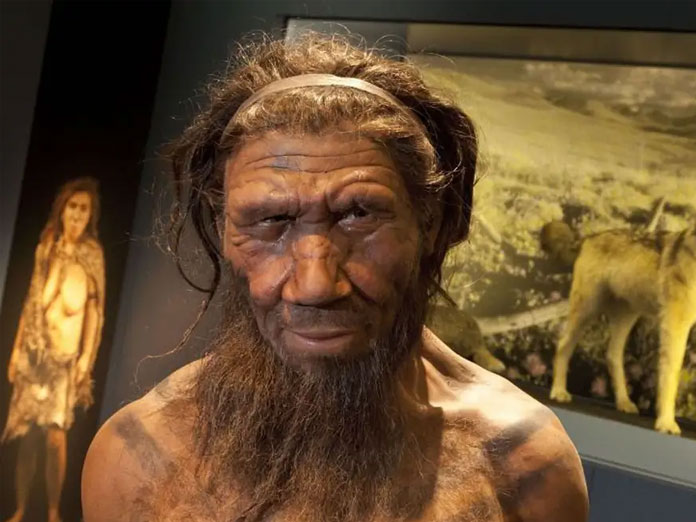Live
- Can air pollution affect weight gain and hormonal health?
- Vishvaraj Singh Mewar's coronation ceremony in Chittorgarh on Nov 25
- KL Rahul’s Controversial Dismissal Sparks Debate in 1st Test at Perth
- Cricket Australia to honour late Philip Hughes on 10th anniversary
- Khushi Kapoor shines bright
- Suhana Khan’s power dressing game is inspiring
- Disha Patani sets the internet ablaze
- YSRCP Announces Boycott of PAC Elections
- Badshah and Davido tease epic collaboration
- Skills for the future: Adapting education to meet employability demands
Just In

Neanderthals often depicted as having poor posture walked upright just like modern humans, say scientists who suggest that the prehistoric cavemen may have been more similar to us than many assume
Geneva: Neanderthals -- often depicted as having poor posture -- walked upright just like modern humans, say scientists who suggest that the prehistoric cavemen may have been more similar to us than many assume.
Researchers at University of Zurich in Switzerland virtually reconstructed the pelvis and spine of a very well-preserved Neanderthal skeleton found in France. An upright, well-balanced posture is one of the defining features of Homo sapiens. In contrast, the first reconstructions of Neanderthals made in the early 20th century depicted them as only walking partially upright. These reconstructions were based on the largely preserved skeleton of an elderly male Neanderthal unearthed in La Chapelle-aux-Saints, France.
Since the 1950s, scientists have known that the image of the Neanderthal as a hunched over caveman is not an accurate one. Their similarities to ourselves -- both in evolutionary and behavioral terms -- have also long been known, but in recent years the pendulum has swung in the opposite direction. However, a virtual reconstruction of the skeleton from La Chapelle-aux-Saints has now delivered evidence to the contrary, according to a statement. The computer-generated anatomical model show that both the individual in question as well as Neanderthals in general had a curved lumbar region and neck -- just like the humans of today.
When reconstructing the pelvis, the researchers discovered that the sacrum was positioned in the same way as in modern humans. This led them to conclude that Neanderthals possessed a lumbar region with a well-developed curvature. By putting together the individual lumbar and cervical vertebrae, they were able to discern that the spinal curvature was even more pronounced. The very close contact between the spinous processes -- the bony projections off the back of each vertebra -- became clear, as did the prominent wear marks that were in part caused by the curvature of the spine. Wear marks in the hip joint of the La Chapelle-aux-Saints skeleton also pointed to the Neanderthals having an upright posture similar to that of modern humans.
"The stress on the hip joint and the position of the pelvis is no different than ours," said Martin Haeusler from the University of Zurich, who led the study. This finding is also supported by analyses of other Neanderthal skeletons with sufficient remnants of vertebrae and pelvic bones. "On the whole, there is hardly any evidence that would point to Neanderthals having a fundamentally different anatomy," said Haeusler. "Now is the time to recognize the basic similarities between Neanderthals and modern humans and to switch the focus to the subtle biological and behavioral changes that occurred in humans in the late Pleistocene," he said.

© 2024 Hyderabad Media House Limited/The Hans India. All rights reserved. Powered by hocalwire.com







